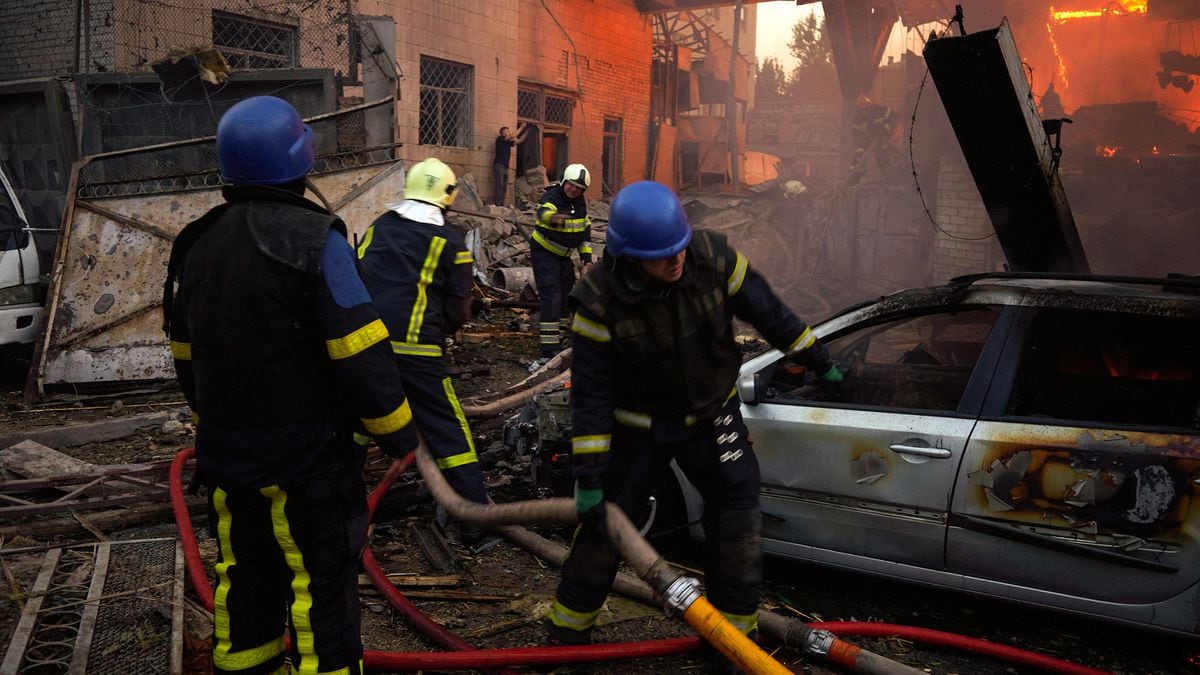The European Union will consider training Ukrainian pilots on F-16 fighters
The European Union will study the possibility of including F-16 fighter jet pilots in its training program for Ukrainian soldiers offered by several member states on an individual basis, the High Representative for Foreign Policy said Wednesday in Toledo. From the bloc is Josep Borrell, who also wants to increase the number of Ukrainian soldiers trained on European territory to 40 thousand before the end of the year.
“We welcome the decision of the Netherlands and Denmark to provide F-16 aircraft and will explore the possibility of integrating pilots of these aircraft into our training mission,” Borrell said after an informal meeting of defense ministers held on Wednesday in Toledo. , which will be followed by another informal foreign affairs meeting on Thursday. The head of European diplomacy also announced that so far about 25 thousand Ukrainian soldiers have been trained on European territory and that the initial goal of preparing up to 35 thousand soldiers before the end of the year will likely be achieved at the end of October, thus what he wants to be more ambitious: “ “I asked that we increase the target to 40 thousand soldiers” until the end of 2023, he explained under the slogan that with Ukraine we must always do “more and faster.”
Ukraine was the main point on the agenda of European defense officials, along with the crisis that erupted after the coup in Niger and the crisis that occurred on Wednesday in Gabon.
Borrell stressed, once again, military support for Ukraine as long as necessary. “Despite global condemnation, Putin shows no sign of easing his aggression against the Ukrainian people, which is why Ukraine needs sustainable, long-term and predictable military support,” he stressed.
The senior European official expressed confidence that his proposal to create a special military aid fund for Kiev – within the European Peace Fund – worth 20 billion euros for four years could be approved by the 27 countries before the end of the year. He pointed out that the figure, at a rate of 5,000 million euros annually, is a “ceiling, not a spending target” that allows this “permanent” commitment to Kiev to be demonstrated.
A key aspect of military support is the delivery of weapons and ammunition, an issue on which the EU appears to be moving at a slower pace than expected. As Borrell revealed, the United States has so far delivered 224,000 artillery shells and 2,300 missiles to Ukraine, out of the million howitzers it promised within 12 months, and half of this period has already been fulfilled. These are munitions from the arsenals of member states, under the first part of the tripartite plan approved by the European Union and which is due to be completed by joint purchase of weapons. In this regard, Borrell stated that Brussels had already done its part by reaching the signing of three framework contracts, and noted that “it is now up to the Member States to issue joint orders” within the framework of these contracts.
Upon his arrival at the Toledo meeting, Estonian Defense Minister Hannu Pefkur considered the amount of ammunition already delivered to Ukraine insufficient and urged “more effort.” Estonia is one of the countries that has pushed the most to expand ammunition purchases to third countries outside the EU and Norway, as is the case in the current agreement. He also suggested that European militaries should analyze whether they could “refurbish” old ammunition. Borrell did not close the door on some options that he said he was ready to “consider,” although he did indicate that in the end everything was heading toward “the same goal”: asking the militaries and the arms industry for an alternative solution. He pointed to “stronger capacity” and for countries to work together to “reduce the costs and delivery times available to them.”

“Unapologetic tv specialist. Hardcore zombie trailblazer. Infuriatingly humble problem solver.”


:quality(85)/arc-anglerfish-arc2-prod-infobae.s3.amazonaws.com/public/PFKDHFXRMNAZPGWUZDXMUYH6CM)


:quality(85)/cloudfront-us-east-1.images.arcpublishing.com/infobae/RRSAOHZ4YNHDNIHIZBEU3B2NE4.jpg)

More Stories
More than 20,000 Venezuelan refugees were affected by floods in Brazil
Cuba demands the inclusion of Palestine as a member state in the United Nations – Juventud Rebelde
UN: Experts call for greater participation in mining consultations in Ecuador